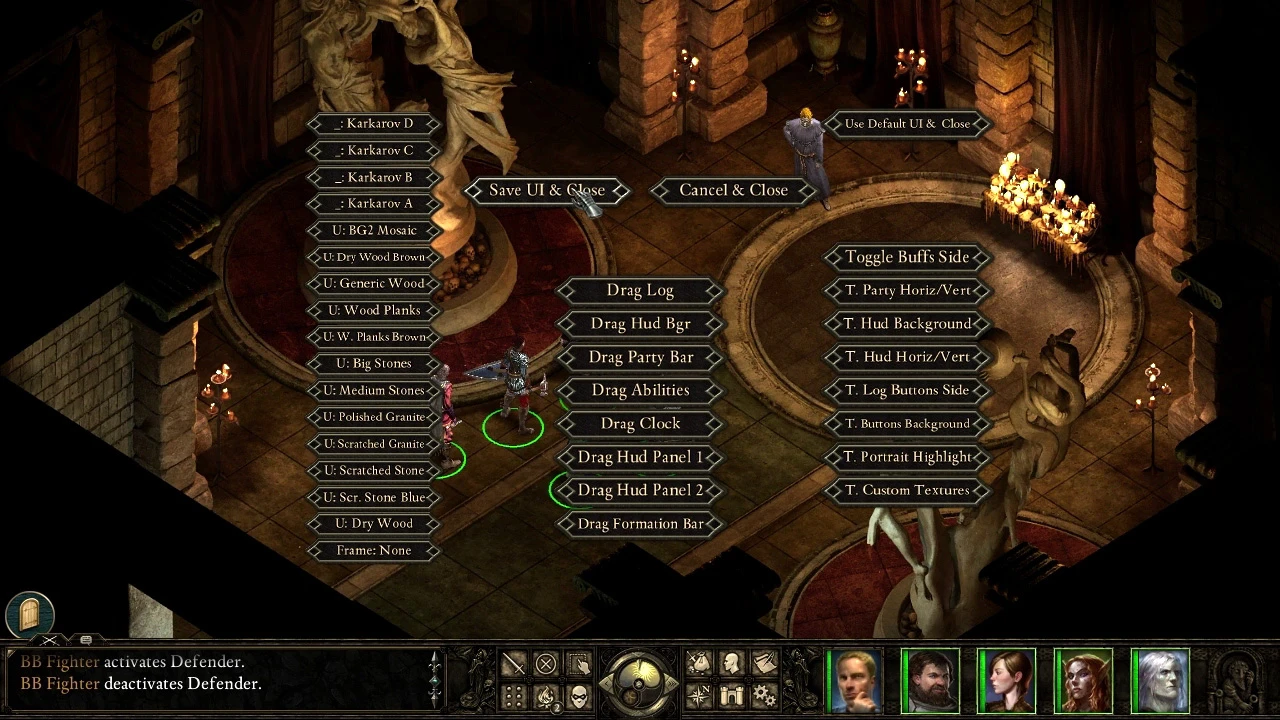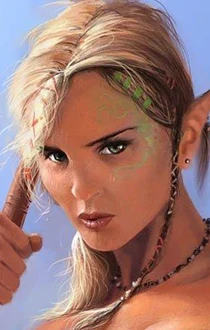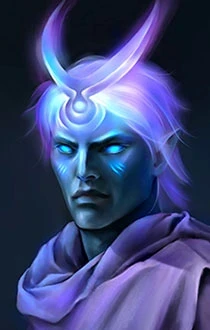Portreits Pack 475+ set #1 REDONE fully change Portraits install note: Make Backup. Gui Portraits folder or change portraits to portraits.bak folder unzip portraits.7zip to.gui and overwrite all files all work fine, only in 1st loading or creating. IE Mod is a collection of optional mods that aim to bring you closer the old Infinity Engine games feel through UI and game mechanics modifications. Pillars of Eternity: The White March is the first expansion pack to the classically-styled RPG from Obsidian Entertainment and legendary game designers Chris Avellone, Tim Cain, and Josh Sawyer.
- 2Race
- 8Post-character creation
| This article is about the character creation process in Pillars of Eternity. For the same process in Pillars of Eternity II: Deadfire, see Character creation (Deadfire). |
Character creation is the process by which a player creates a player character. Once you enter the character creation screen, you'll be led through a series of decisions to craft the character you will play on your adventures across Eora.
The steps are as follows:
- Select a sex.
- Select a race and subrace.
- Select a class.
- Modify attributes.
- Select a culture.
- Select a background.
- Customize appearance, voice and name.
While creating a character, it is best to remember that there are no good or bad characters, and different people appreciate different aspects of the game.
Sex[edit | edit source]
The first step of the character creation is to choose a gender. You can play as either male or female.
Depending on the culture from which they hail, men and women are found in a wide variety of stations and professions. Though different nations of Eora have different traditional views on the roles of the sexes, there are exceptions to these rules in all societies, and besides determining your character's look in the game and having in some cases varying conversation options, the two genders do not differ in stats or capabilities.
| Icon | Sex | Description |
|---|---|---|
| Male |
| |
| Female |
|
Race[edit | edit source]

The second step involves selecting a Race and Sub-race. There are six possible races to choose from. Each race gets a small bonus or penalty to certain attributes which differentiates it from the other races.
Subrace[edit | edit source]
After selecting a race, a list of subraces is brought up. Subrace has no effect on attributes, they differ mostly in their passive abilities. Each Subrace (except humans, who all share Fighting Spirit) provides access to a unique passive ability. Additionally, it affects the way NPCs treat your character in small degree.
See Subrace Descriptions.
At this point during character creation, Godlike also choose a body type from among the other five races. This is solely cosmetic and has no impact on their attributes.
Class[edit | edit source]
The third step of the character creation is selecting a class. Class is very important, it defines the majority of abilities a character will obtain as they increase in power. There are eleven classes to choose from, unrestricted by race or gender. Each class has its own strengths and weaknesses.
After selecting a class, you need to pick starting abilities, affiliations or specializations.
- Chanters choose two first level chant phrases and one first level Invocation.
- Ciphers choose two first level powers.
- Druids choose a spiritshift form. This form represents a type of animal spirit with which the druid has developed an intimate level of understanding.
- Paladins choose an order. The power the paladin's conviction abilities can be modified by their behavior and the reputations they develop during their adventures.
- Priests choose a deity. The power of priest faith abilities can be modified by their behavior and the reputations they develop during their adventures.
- Rangers choose an Animal Companion.
- Wizards choose four first level wizard spells.
Attributes[edit | edit source]
The fourth step of creation is assigning attribute points. Since attributes strongly affect game play, and can't be changed later, considerable thought should be given to choosing them.
Outside dialogs with NPC's, and especially in combat, your companions' attributes contribute equally to gameplay, so the fact that you can't have all maximum attributes on your main character should not worry you.
Culture[edit | edit source]
The fifth step of character creation is selecting a culture of where you came from. Each culture gives a +1 bonus to a specific attribute and affects the starting equipment the character receives, with what equipment you will start the game, as well as what backgrounds are available.
Background[edit | edit source]

The sixth step of the character creation is selecting a background. Backgrounds provide a skill boost. The backgrounds you can select are dependable on your chosen culture, some backgrounds are only available to certain cultures, while others are available to all cultures.

Appearance, voice, and name[edit | edit source]
Last part of character creation is to choose appearance, a portrait, a voice and a name.
- Appearance
While largely governed the player's choices of gender, race and culture, you can also pick some modification of character head and his skin. This includes colors: primary and secondary clothing/armor colors, skin and hair colors; and head appearance: facial hair style, head style, and hair style. The options available depend on the character's gender and race.
- Portrait
There are 35 male and 31 female portraits to choose from. You can select or import your portrait. See also: Female portraits and Male portraits.
- Voice
There are ten different voice sets to choose from, you are also able to choose none. Both female and male characters can choose a voice set belonging to the other sex. The female or male voice sets are: Mystic, Feisty, Noble, Stoic, Sinister.This has little effect ingame, as your character speaks only if they affirm that they understood your order.
- Name
Give your character a name. If you intend to role-play or otherwise desire to have names consistent with lore, use Personal Names for reference.
Post-character creation[edit | edit source]
While not necessarily part of character creation, the following areas are influenced by the choices you've made.
Starting equipment[edit | edit source]
Starting equipment is determined by class and culture, and is received immediately upon completion of character creation.
| Class | Aedyr | Deadfire Archipelago | Ixamitl Plains | Old Vailia | Rauatai | The Living Lands | The White that Wends |
|---|---|---|---|---|---|---|---|
| Barbarian | Hide armor, Sword, Battle axe | Hide armor, Great Sword | Leather armor, Spear, Medium shield | Mail armor, Morning star | Mail armor, Spear, Dagger | Scale armor, Great Sword | Hide armor, Pike |
| Chanter | Leather armor, Pollaxe | Padded armor, Great Sword | Mail armor, Sabre, Small shield | Breastplate, Sword, Medium shield | Mail armor, battle axe, Medium shield | Padded armor, Spear, Medium shield | Padded armor, Mace, Medium shield |
| Cipher | Cloth armor, Great Sword | Hide armor, War hammer, Medium shield | Padded armor, Pike | Mail armor, Rapier, Stiletto | Mail armor, Battle axe, Dagger | Padded armor, Hunting bow | Padded armor, Dagger, Hatchet |
| Druid | Leather armor, Sabre, Small shield | Padded armor, Quarterstaff | Scale armor, Club, Small shield | Padded armor, Pollaxe | Padded armor, Spear, Small shield | Padded armor, Sword, Large shield | Hide armor, Pike |
| Fighter | Mail armor, Sword, Medium shield | Scale armor, Sabre, Medium shield | Leather armor, Mace, Large shield | Brigandine, Estoc | Mail armor, Pollaxe | Padded armor, Spear, Large shield | Scale armor, Spear, Spear |
| Monk | Aedyre Clothing | Leather armor | Ixamitl Clothing | Cloth armor | Cloth armor | Padded armor | Padded armor |
| Paladin | Breastplate, Sword, Medium shield | Scale armor, Pike | Leather armor, Battle axe, Medium shield | Breastplate, Rapier, Small shield | Mail armor, War hammer, Large shield | Brigandine, Mace,Small shield | Padded armor, Great Sword |
| Priest | Padded armor, Mace, Medium shield | Brigandine, Sword, Medium shield | Scale armor, War hammer, Medium shield | Mail armor, Morning star | Breastplate, Pollaxe | Padded armor, Great Sword | Padded armor, Spear, Medium shield |
| Ranger | Leather armor, Hunting bow | Padded armor, War bow | Scale armor, War bow | Mail armor, Crossbow | Scale armor, Arbalest | Brigandine, Hunting bow | Hide armor, Hunting bow |
| Rogue | Leather armor, Dagger, Dagger | Scale armor, Dagger, Sabre | Padded armor, Club, Club | Mail armor, Rapier, Dagger | Brigandine, Great Sword | Scale armor, Spear, Medium shield | Hide armor, Pike |
| Wizard | Aedyre Clothing, Scepter | Padded armor, Wand | Ixamitl Clothing, Rod | Breastplate, Scepter | Mail armor, Rod | Brigandine, Rod | Hide armor, Wand |
- 1Modding
- 1.1Quests
Quests[edit | edit source]
Building own quests the easy way: Use the flowchart program form Obsidian, which is not public. The hard way: write your xml by hand.
The Structure of Quests is externalised as xml files. To build valid xml files use the 2 xsd files quest.xsd and conversation.xsd and an xsd validator like this one https://github.com/amouat/xsd-validator
Quests are 2 parted. The Conversation with the Questgiver or an attached Gameobject (Item, NPC, …) and the Quest.The Conversation is saved in .conversation files in […]/game/PillarsOfEternity_Data/data/conversations. To each Conversation is a Stringtable file needed, which contains the texts for the NPC and your reactions. These are saved in […]/game/PillarsOfEternity_Data/data/localised/[language]/text/conversations. These Files are combined by the filename and the <NodeID> tag. Every state of the conversation displays the corresponding text from the stringtable file.
The other part are the Questfile itself. They are saved in .quest files in […]/game/PillarsOfEternity_Data/data/quests. The Text for the questlog is also saved in a stringtable file in […]/game/PillarsOfEternity_Data/data/localised/[language]/text/quests. They are combined by the same filename and also the <NodeID> tag, but its more complex. The questlog distincts between:
| Text for | Node ID in .stringtable |
|---|---|
| Quest Title | 0 |
| Quest Description | 10000 |
| Objective Title | NodeID from .quest file |
| Objective Description | NodeID from .quest file + 10000 |
| Addendum | AddendumnID from node from .quest file + 20000 |
| End State Text | EndStateID + 30000 |
That's the core. Now some basic questions.
How does the game start a quest?[edit | edit source]
With the script function StartQuest(String) in the OnEnterScripts Tag of a TalkNode.
Example:
How to set the Questgiver?[edit | edit source]
Therefor you need the Name of the ingame NPC. Option a: Open game console and enter FindCharacter <name> Obtion b: Use IE Mod, open game console, open object browser with tt, navigate to top and find the name NPC_xxxxx
You need the name for this block in the conversation file. The Guid could be any valid Guid (0-9a-f, grouped 8-4-4-4-12) but it must be the same in all <SpeakerGuid> tags in the conversation file or PoE can not find the character which should say the Content of the Talknode.
How to advance the Quest?[edit | edit source]
Call one of TriggerQuestAddendum, TriggerQuestEndState (to go to the next state), TriggerTalkEvent and maybe others. [Documentation needed]
Pillar Of Eternity Mods Skyrim
Example:
How to remember certain things?[edit | edit source]
Call SetGlobalValue(String, Int32) with parameter 'variable name' and 'value'.
What can I do besides display text?[edit | edit source]
Pillar Of Eternity 2 Mods
You can call all methods in the Scripts class, and check all states with all methods in the Conditionals class. [Documentation needed]
How to let a party member interact with the conversation?[edit | edit source]
With a CharacterMapping entry for the companion he could be referenced in a talk node as speaker. For the companion names and guid see the documentation in the conversation.xsd file.
TODO is it possible to use Hirelings as Speaker?